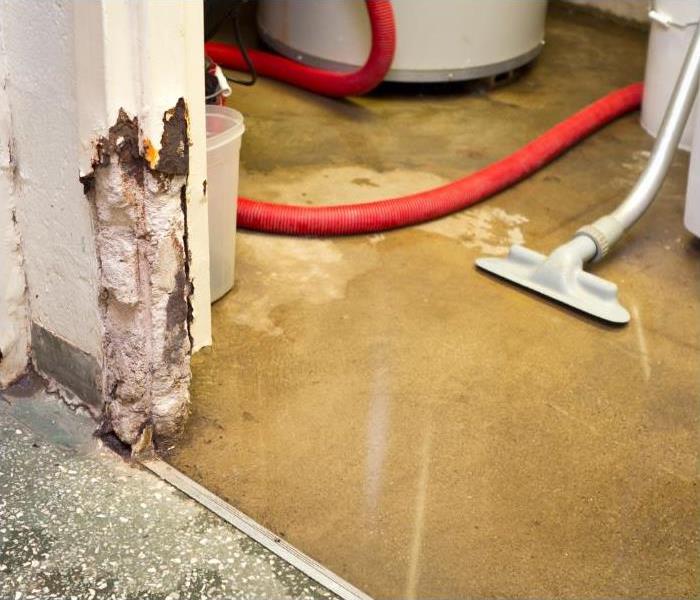Your guide to water damage in Plano, TX
1/2/2023 (Permalink)
Water damage can be overwhelming. Whether it’s caused by a flood, faulty plumbing, or burst pipes, the process of cleanup and restoration can seem daunting. However, knowing what steps to take after water damage in Plano, TX occurs can help make the process less stressful. Let’s break down the basics of water damage cleanup and restoration in Plano, TX and provide you with some expert tips along the way.
Step 1: Assess the Damage
The first step in cleaning up water damage is to assess the extent of the damage. If you have any doubt about your ability to safely handle this task, contact a licensed contractor or professional cleaner immediately. Be sure to check for hidden signs of moisture—behind walls, under flooring, and in other unseen places—as these areas are prone to mold growth if not properly dried out. Additionally, inspect your basement or crawlspace for signs of moisture or flooding. It’s important to note that even minor amounts of standing water can cause significant long-term damage if not addressed quickly.
Step 2: Call a Water Restoration Company in Plano, TX
After assessing the extent of the damage and determining which areas need attention, it’s time to determine if you should contact a water damage and restoration company. These companies offer services that are designed to address all types of water emergencies, from flooded basements to sewage backups. They have specialized equipment (such as pumps and vacuums) that they can use to extract standing water from your home or business property quickly and efficiently. This is an important step since standing water could lead to mold growth or other hazardous conditions if left unresolved for long periods of time.
Step 3: Remove Contents From Affected Areas
Next up, it’s important that you remove any contents from affected areas immediately. This way, you can make sure they don't sustain more damage than necessary during the restoration process. This includes furniture, clothing, books, electronics, carpets and rugs, etc. Standing water can also negatively impact (and possibly destroy) your contents. So make sure you remove all furniture, clothing, and other items away from the affected area as soon as possible.
Step 4: Remove Excess Water
Once you’ve assessed the amount of water present and determined that it is safe to do so, begin removing excess water from your home using equipment such as a wet/dry vacuum cleaner or mops and buckets. You may also need to use a sump pump in order to effectively remove all excess water from your home. When dealing with large amounts of standing water, it’s best practice to hire a professional water restoration company in Plano, TX. These companies will have access to the tools and equipment that’s necessary for proper removal and mitigation efforts.
Step 5: Restore Damaged Areas
After removing water from affected areas, it’s time to restore any damaged materials (such as carpets, furniture, drywall, and flooring). This must be done as soon as possible in order to prevent further damage due to mold growth or structural instability that can be caused by prolonged exposure to moisture.
Depending on the severity of the situation, it may be necessary to replace certain materials entirely in order to ensure safety and restore functionality. However, if you work with a professional restoration company, they typically offer content restoration services (which can help restore your items to their original condition).
Additionally, be sure that all structural repairs meet local building code requirements, as well as insurance policy requirements. This is especially important if you want any expenses to be covered by your insurance provider.
Water damage is no small matter; however, with quick action and informed decisions you can mitigate its effects on your home or business. The quicker you act, the more likely it is that you can restore affected areas back to their pre-damage state (and before long-term issues arise due corrosion or mold growth). In most cases, a licensed contractor that’s experienced with water damage cleanup is the best call you can make. They can guide you through every step needed for proper mitigation efforts – while keeping you in the loop with code and insurance requirements.
Need help with water damage? Give our team a call today. Every day, we help homeowners and property managers successfully overcome water damage, and we’d love to help you, too.





 24/7 Emergency Service
24/7 Emergency Service
